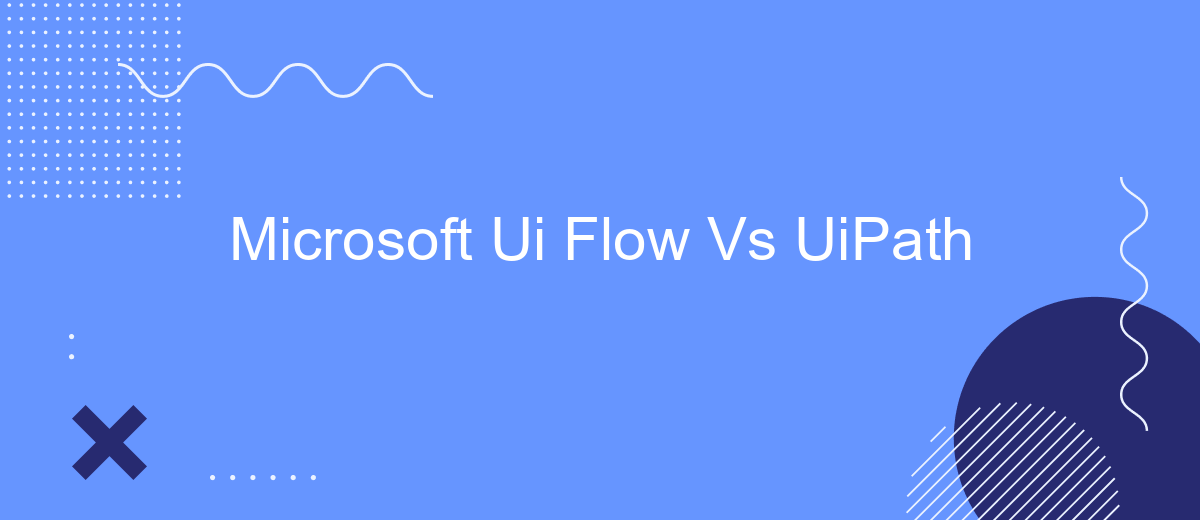In the rapidly evolving landscape of automation, Microsoft UI Flow and UiPath stand out as two prominent tools for streamlining repetitive tasks. This article delves into a detailed comparison of these platforms, examining their features, ease of use, and overall effectiveness. Whether you're a business looking to enhance productivity or a developer seeking robust automation solutions, understanding these tools is crucial.
Introduction
In the rapidly evolving landscape of automation technologies, two prominent players have emerged: Microsoft UI Flow and UiPath. Both platforms offer robust solutions for automating repetitive tasks and enhancing productivity, but they cater to different needs and preferences. Understanding the key differences between these tools can help businesses make informed decisions about which platform best suits their automation requirements.
- Microsoft UI Flow: Part of the Power Automate suite, it integrates seamlessly with other Microsoft products.
- UiPath: A leading RPA tool known for its extensive features and flexibility across various industries.
- Integration Services: Tools like SaveMyLeads can further streamline automation by connecting different apps and services effortlessly.
This article will delve into a detailed comparison of Microsoft UI Flow and UiPath, examining their features, ease of use, integration capabilities, and overall performance. By the end, you will have a clearer understanding of which platform aligns better with your business objectives and technical landscape.
Features and functionality

Microsoft UI Flow offers a robust set of features designed for seamless automation. It integrates effortlessly with various Microsoft products like Power Automate and Power Apps, allowing users to create complex workflows with minimal coding. The platform supports both attended and unattended automation, making it versatile for different business needs. Additionally, Microsoft UI Flow provides extensive integration capabilities with third-party applications, simplifying the process of connecting disparate systems.
On the other hand, UiPath stands out with its extensive library of pre-built automation components and activities. This makes it easier for users to drag and drop functionalities into their workflows. UiPath also supports a wide range of integrations, including the ability to connect with services like SaveMyLeads to streamline data transfer between platforms. The platform excels in scalability and offers advanced features such as AI and machine learning capabilities, making it suitable for complex automation tasks. Both platforms provide comprehensive documentation and community support, ensuring users can maximize their automation potential.
Pricing and licensing

When comparing Microsoft Ui Flow and UiPath, pricing and licensing are crucial factors to consider. Both platforms offer flexible pricing models to cater to different business needs, but there are distinct differences worth noting.
- Microsoft Ui Flow: This platform is part of the Microsoft Power Automate suite. It offers a subscription-based pricing model with various plans, including per-user and per-flow options. Microsoft also provides a free tier for basic automation needs.
- UiPath: UiPath offers a more comprehensive pricing structure with multiple tiers, including Community (free), Enterprise, and tailored plans for large organizations. The cost varies based on the number of robots, attended or unattended automation, and additional features.
Both platforms also provide licensing options that include enterprise-level agreements and volume discounts. For businesses looking to integrate these tools with other services, platforms like SaveMyLeads can simplify the process. SaveMyLeads offers seamless integration solutions, making it easier to connect Microsoft Ui Flow or UiPath with various third-party applications, enhancing overall workflow efficiency.
Integration and development

When it comes to integration and development, both Microsoft UI Flow and UiPath offer robust capabilities, but they cater to different needs and environments. Microsoft UI Flow is tightly integrated with the Microsoft ecosystem, making it an ideal choice for organizations heavily invested in Microsoft products like Office 365 and Dynamics 365.
On the other hand, UiPath provides a more versatile platform with extensive integration options that span various third-party applications and services. This flexibility makes UiPath a preferred choice for businesses looking to automate processes across a diverse set of tools and systems.
- Microsoft UI Flow: Seamless integration with Microsoft products, easy to use for existing Microsoft users.
- UiPath: Wide range of integrations, supports various third-party applications and services.
- SaveMyLeads: Facilitates smooth integration between different platforms, enhancing the automation capabilities of both tools.
Choosing between Microsoft UI Flow and UiPath ultimately depends on your specific integration needs and the existing technology stack within your organization. Both platforms offer powerful automation solutions, but their strengths lie in different areas of integration and development.
Case Studies and User Reviews
Many companies have shared their experiences with Microsoft UI Flow and UiPath, highlighting the strengths and weaknesses of each tool. One notable case study involves a financial services firm that implemented Microsoft UI Flow to automate their customer onboarding process. The firm reported significant time savings and a reduction in manual errors, but faced challenges with the tool's integration capabilities. They eventually turned to SaveMyLeads to streamline their integrations, which greatly improved their workflow efficiency.
On the other hand, a healthcare provider utilized UiPath to manage patient data and automate appointment scheduling. The provider praised UiPath for its robust features and ease of use, noting that the tool seamlessly integrated with their existing systems. User reviews frequently mention UiPath's extensive library of pre-built automation components and strong community support as key advantages. Both tools have their merits, and the choice often depends on specific business needs and existing technological infrastructure.
FAQ
What is the primary difference between Microsoft Ui Flow and UiPath?
Which tool is more suitable for a business already using Microsoft products?
Can both Microsoft Ui Flow and UiPath handle complex automation tasks?
What are the cost considerations between Microsoft Ui Flow and UiPath?
How can I integrate third-party services with these automation tools?
What do you do with the data you get from Facebook lead forms? Do you send them to the manager, add them to mailing services, transfer them to the CRM system, use them to implement feedback? Automate all of these processes with the SaveMyLeads online connector. Create integrations so that new Facebook leads are automatically transferred to instant messengers, mailing services, task managers and other tools. Save yourself and your company's employees from routine work.
